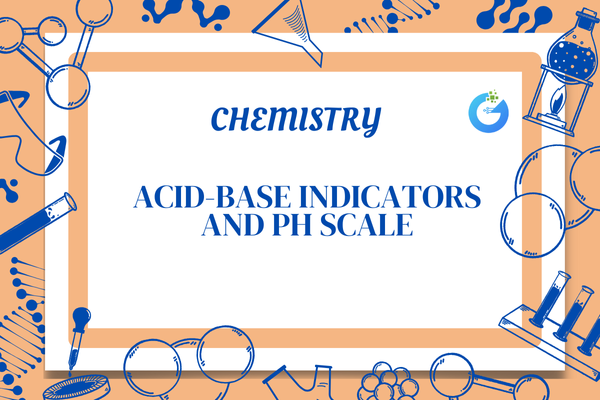Introduction
Have you ever wondered why we use metal pans to cook but balloons to decorate a party? That’s because different materials behave differently! Some are strong and shiny, while others are brittle or light. Today, let’s dive into the amazing world of metals and non-metals — the two broad groups that make up most of the materials around us!
expert-led Chemistry classes – visit our website to learn more
What are Metals?
Metals are elements that are generally hard, shiny, malleable, ductile, and good conductors of heat and electricity. They are the heroes behind structures, tools, machines, and even jewelry!
Definition: Metals are substances that readily lose electrons to form positive ions and are good conductors of electricity and heat.
What are Non-Metals?
Non-metals are the exact opposite of metals! They are usually brittle (if solid), dull, poor conductors, and can be gases, liquids, or solids.
Definition: Non-metals are substances that gain electrons during chemical reactions and are generally poor conductors of heat and electricity.
Physical Properties of Metals
- Lustrous (Shiny): Metals like gold and silver have a shiny surface.
- Hard and Strong: Iron and steel are hard and used for heavy machinery.
- Good Conductors: Copper wires carry electricity because copper is an excellent conductor.
- Malleable: Metals can be hammered into sheets (like aluminum foil).
- Ductile: Metals can be drawn into wires (like copper wires).
Physical Properties of Non-Metals
- Non-lustrous (except iodine): Dull appearance.
- Brittle: Breaks easily when solid (like sulfur).
- Poor Conductors: Cannot conduct heat or electricity well (except graphite).
- Low Density and Melting Points: Sulfur melts easily compared to metals.
Chemical Properties of Metals
- Reaction with Oxygen: Metals form metal oxides (e.g., Iron + Oxygen → Rust).
- Reaction with Water: Some metals react and produce hydrogen gas (e.g., Sodium reacts vigorously with water).
- Reaction with Acids: Produces salt and hydrogen gas (e.g., Zinc + Hydrochloric acid → Zinc chloride + Hydrogen).
Chemical Properties of Non-Metals
- Reaction with Oxygen: Forms acidic oxides (e.g., Sulfur + Oxygen → Sulfur dioxide).
- Reaction with Acids: Generally, no reaction.
- Reaction with Bases: Forms salts in rare cases.
Exceptions Among Metals and Non-Metals
- Mercury: A metal that is liquid at room temperature!
- Graphite: A non-metal that conducts electricity.
- Iodine: A non-metal with a shiny surface.
Uses of Metals
- Building materials (iron, steel)
- Electrical wiring (copper, aluminum)
- Jewelry (gold, silver)
- Kitchen utensils (stainless steel)
Uses of Non-Metals
- Oxygen for breathing
- Nitrogen for fertilizers
- Chlorine for water purification
- Carbon for fuel
Differences Between Metals and Non-Metals
| Feature | Metals | Non-Metals |
| Appearance | Shiny | Dull |
| State | Solid (mostly) | Solid, Liquid, Gas |
| Conductivity | Good conductor | Poor conductor |
| Malleability | Malleable | Brittle |
| Examples | Iron, Copper | Sulfur, Oxygen |
Reactivity Series of Metals The Reactivity Series shows metals arranged by how easily they react. Highly reactive metals (like potassium, sodium) are at the top, while less reactive ones (like gold, platinum) are at the bottom.
How Metals React with Acids
Metals + Acids → Salt + Hydrogen gas
Example:
Zn + H₂SO₄ → ZnSO₄ + H₂↑
How Non-Metals React with Acids
Most non-metals do not react with acids, which is a key identifying property.
Corrosion of Metals Corrosion happens when metals react with substances like oxygen and water around them. Rusting of iron is a classic example.
Rusting of Iron Conditions Needed:
- Presence of water (moisture)
- Presence of oxygen
Prevention of Rusting
- Painting: Forms a protective coat.
- Galvanization: Covering iron with zinc.
- Oiling/Greasing: Prevents moisture contact.
Important Alloys
- Brass: Copper + Zinc (musical instruments)
- Bronze: Copper + Tin (statues, medals)
- Steel: Iron + Carbon (construction)
Importance of Non-Metals in Life
- Oxygen: Essential for respiration.
- Carbon: Found in all life forms.
- Nitrogen: Major component of air.
Metals in Construction
Metals like iron and steel are used in:
- Bridges
- Buildings
- Vehicles
Non-Metals in Medicine
- Iodine: Antiseptic
- Nitrogen: Preserves medicines
- Sulfur: Used in antibiotics
Everyday Examples of Metals
- Spoon
- Bicycle frame
- Electrical wires
Everyday Examples of Non-Metals
- Balloons (helium)
- Pencils (graphite)
- Oxygen cylinders
Fun Facts About Metals and Non-Metals
- Gold is so malleable it can be beaten into sheets thinner than paper!
- Graphite, a form of carbon, can conduct electricity!
- Mercury is heavy enough to sink other metals!
FAQs
Why are metals shiny?
Because they reflect light well.
Can non-metals conduct electricity?
Generally no, but graphite is an exception.
Which metal is liquid at room temperature?
Mercury!
Why does iron rust?
Because of reaction with water and oxygen.
What is galvanization?
Coating iron with zinc to prevent rusting.
Are there non-metallic gases?
Yes! Oxygen, nitrogen, and chlorine are non-metals in gaseous form.
Conclusion
Metals and non-metals are fundamental parts of our world. Understanding their properties, uses, and differences helps us make smarter choices — whether it’s choosing the right material for a tool, protecting things from rust, or simply knowing why balloons float! Both play important roles in making our life easier and the Earth more interesting.








